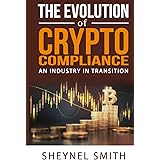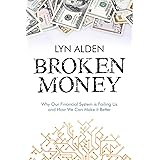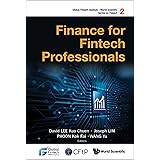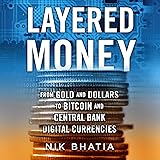A Comprehensive Global Financial and Cryptocurrency Market Update: Navigating Volatility in August 2020
As the global economy continues to grapple with unprecedented volatility, discerning clear signals amidst the pervasive noise has become paramount for investors. The preceding video, a detailed August 2nd, 2020 update from Nugget’s News, meticulously unpacks the confluence of macroeconomic shifts, precious metals surges, and the dynamic evolution of the cryptocurrency landscape. This accompanying analysis aims to delve deeper into these intricate market movements, providing an expert perspective on the underlying forces shaping investment narratives and highlighting key considerations for informed decision-making.
Firstly, the rapid succession of global events has necessitated a re-evaluation of traditional financial paradigms. From central bank interventions to the emergence of decentralized finance (DeFi), market participants are being challenged to adapt to rapidly changing conditions. A thorough understanding of these interconnected developments is considered essential for navigating the complex financial ecosystem effectively.
Macroeconomic Headwinds and Their Ripple Effects Across Global Markets
The Australian economy, a bellwether for certain global trends, experienced its most significant quarterly deflation in 72 years, signaling profound economic contraction. This deflationary pressure, while appearing to reduce prices, inherently diminishes the overall size of the economy, potentially leading to job losses and reduced monetary circulation—outcomes actively resisted by central banks. Manufacturing output in Australia, moreover, was noted as the lowest among developed nations, reflecting systemic vulnerabilities that have been a recurring topic of discussion on various financial platforms. These indicators collectively underscore the economic challenges being confronted by developed economies worldwide.
1. **Banking Sector Instability and Policy Shifts:** Disturbing reports have surfaced concerning traditional banking services, with Westpac allegedly ceasing cash deposits by next month and check deposits by December. Such moves, potentially rationalized under the guise of public health concerns, are being observed closely for similar policy implementations across other major financial institutions. These measures could significantly impact the accessibility of traditional banking services, accelerating a shift towards digital transaction methods. The implications for financial privacy and public access to banking infrastructure are, therefore, a subject of ongoing debate.
2. **Real Estate and Credit Contraction:** Further concerning data points were observed within Australia’s housing sector, where building approvals saw steep year-on-year declines: 50% in New South Wales and 27% in Victoria, a region concurrently entering heightened lockdown. Such figures portend significant challenges for the construction industry, an economic pillar often prioritized by governmental focus. Simultaneously, personal housing credit growth has retracted by 10%, a critical metric in debt-based economies where credit expansion is intrinsically linked to economic growth. This reduction in credit availability is understood to be a direct contributor to the observed deflationary pressures.
3. **Employment Crisis and Generational Impact:** The employment landscape has also exhibited troubling trends, with older generations disproportionately affected by job losses during the initial weeks of July. This demographic, often comprising individuals who had re-entered the workforce post-retirement, faces heightened vulnerability in the current economic climate. While some youth employment has been sustained, the overarching picture reveals a consistent decline in total hours worked and overall employment figures. The implementation of Stage 4 coronavirus lockdowns, such as that in Melbourne, is recognized as a further impediment to economic recovery and employment stability.
The Shifting Sands of Global Finance and Reserve Currencies
The ongoing US dollar weakness has become a focal point of global financial discussions, with its dominant role as a medium of exchange potentially being challenged. Although the dollar retains approximately 60% of foreign exchange reserves and international debt, other currencies, particularly the Euro, are gradually increasing their share within the global Swift system, now nearing 35%. This trend, underscored by the dollar’s largest monthly drop in a decade, suggests a potential erosion of its long-standing hegemony. Should another significant panic emerge, the market’s flight-to-safety dynamic may no longer exclusively favor the dollar, especially given the persistently low or negative interest rate environment.
1. **GDP Contraction and Historical Context:** The United States’ annualized GDP contraction of 33%, or 9.5% for the specific quarter, represents one of the worst economic performances in the last century. This downturn ranks among the fifth or sixth most severe quarters on record, second only to the significant contraction experienced during World War II in Q3 1945. These figures are illustrative of the profound economic shockwaves that have traversed global economies, necessitating unprecedented fiscal and monetary responses from governments and central banks alike.
2. **Corporate Adaptations and Industry Stress:** Beyond national economic statistics, specific corporate shifts illustrate broader industrial distress. Hertz, for instance, faces the liquidation of its vehicle fleet by next year following bankruptcy filings, reflecting a significant downturn in travel and rental demand. The luxury diamond market, dominated by entities like De Beers, is also confronting a fundamental re-evaluation of its business model due to reduced marriage rates and a questioning of the premium commanded by diamonds. Furthermore, the pharmaceutical pivot by Kodak, supported by a substantial $765 million government grant, highlights an unusual reallocation of resources, raising questions about market efficiency and speculative investment patterns.
3. **Fiscal Policy and Unprecedented Government Debt:** Governments globally are being pressured to provide extensive fiscal support, even as they contend with record levels of national debt. Forecasts suggest that by year-end, government financial assistance could approach $10 trillion, figures deemed astronomical by financial analysts. This immense spending, often characterized by “whatever it takes” rhetoric, underscores the reluctance of policymakers to allow populations to fall below the poverty line, which could precipitate rapid social and economic deterioration. However, such measures also raise long-term concerns regarding inflationary pressures and currency debasement.
Precious Metals: A Rally Amidst Caution
The robust performance of gold and silver in recent months has captivated investor attention, with significant inflows into precious metals ETFs observed. A combined total of 110 million troy ounces of gold have flowed into these instruments, pushing physical gold prices towards the $2,000 mark and driving the GDX index up by 100% from its earlier lows. This rally is largely attributed to deeply negative real interest rates, particularly in the US, where real returns on dollar-denominated assets have dipped to negative 3%. Such conditions naturally incentivize a move into non-yielding safe-haven assets like gold.
1. **Market Euphoria and Correction Risks:** While the run-up in precious metals has been substantial, a note of caution has been sounded regarding the potential for market euphoria. Historical parallels suggest that periods of widespread retail investor excitement can often precede market pullbacks. The significant influx of non-commercial long positions in commodities further indicates a potentially overextended market, warranting prudence from investors. It is often observed that a sustained, healthy uptrend is characterized by more gradual stair-step price movements rather than parabolic surges, which can lead to sharper corrections.
2. **The Dollar-Gold Inverse Relationship:** The weakening US dollar, experiencing its biggest monthly decline in a decade, has provided a significant tailwind for gold prices. Investors are increasingly evaluating the equity premium risk, acknowledging that traditional valuations in equity markets are high. Consequently, capital is observed to be actively seeking alternative homes, with precious metals offering a viable hedge against currency depreciation and broader economic uncertainty. This dynamic forms a ‘perfect storm’ for gold and silver, attracting capital flows from those seeking refuge from perceived risks in fiat currencies and overvalued equities.
The Evolving Landscape of Digital Assets and Decentralized Finance (DeFi)
The cryptocurrency market has continued its rapid evolution, with significant developments in blockchain adoption, central bank digital currencies (CBDCs), and the burgeoning decentralized finance (DeFi) sector. Bitcoin and Ethereum have demonstrated robust performance, leading many to speculate on their potential to reach multi-trillion-dollar valuations, as suggested by Arc Investments. This period of rapid innovation and adoption is attracting substantial capital, evidenced by Grayscale’s accumulation of over $1 billion in the preceding 11 days.
1. **Regulatory Scrutiny and Security Concerns:** The Australian securities watchdog has issued warnings regarding the proliferation of fake celebrity-endorsed crypto scams, a pervasive threat to new market entrants. The arrest of 27 (and later over 100) executives behind the PlusToken scam, which involved an estimated $6 billion in illicitly acquired crypto, underscores the ongoing battle against fraudulent activities within the space. Simultaneously, security breaches, such as the Ledger data leak affecting a million emails and 9,500 home addresses, highlight the imperative for robust personal security protocols among digital asset holders. Such incidents emphasize the need for continuous vigilance and education on secure practices.
2. **Institutional Adoption and CBDC Momentum:** Blockchain technology is increasingly being recognized for its potential in cybersecurity strategies, a realization stemming from events like the Twitter hack. Governments and traditional financial institutions are actively exploring its applications, as evidenced by the Perth Mint’s involvement in a new tokenized gold venture, Universal Gold. Globally, the push for CBDCs is gaining traction, with the Bank of England actively building a payments network for a digital pound and the US Banking Regulator acknowledging the potential superiority of blockchain-based digital dollars over traditional central bank monopoly money. This shift reflects a growing acceptance of digital assets within established financial frameworks.
3. **DeFi’s Explosive Growth and Innovation:** The DeFi sector has experienced explosive growth, with the total value locked (TVL) reaching a new all-time high of $4 billion and the market capitalization of DeFi projects hitting $8 billion. Projects like Cardano, with its Shelley proof-of-stake mainnet launch, and Elrond, claiming 260,000 transactions per second on its testnet, demonstrate continuous technological advancements. Ethereum, now five years old and a $40 billion blockchain, remains the foundational layer for much of this innovation, having been the year’s top-performing asset. Furthermore, upgrades to platforms like Augur and Bancor, the latter seeing a 1000% token appreciation post-V2 launch, illustrate the rapid pace of development and value creation within DeFi.
4. **Layer Two Scaling Solutions and Interoperability:** The scalability challenges inherent in foundational blockchains are being addressed through various Layer Two solutions, with projects like XDai Network and ZKPorter leading the charge. The Graph, a popular project facilitating efficient data fetching across blockchains, has garnered significant developer interest and investment, highlighting the importance of efficient data access in a multi-chain future. The increasing integration of Chainlink Oracles across nearly every project, including NEAR Protocol, points to interoperability as a next critical theme for the broader blockchain ecosystem. These innovations are crucial for realizing the full potential of decentralized applications and broad adoption.
5. **New Entrants and Competition in Payments:** The competitive landscape for digital payments is intensifying, with traditional players like MasterCard and Visa being compelled to innovate and integrate crypto functionalities to avoid being left behind. Exchanges such as Binance are expanding their services, offering fiat on-ramps in countries like Australia and shipping crypto debit cards across Europe, aspiring to become global ‘Neo Banks.’ Coinbase is similarly evolving, offering 2% interest on stablecoin holdings to attract users, thereby bridging the gap between traditional finance and crypto. This aggressive expansion by exchanges and traditional payment networks alike is driving significant adoption and reshaping the future of financial transactions.
6. **User-Friendly Platforms and Gas Fee Mitigation:** Innovations in user experience are also contributing to wider crypto adoption. Dharma, a mobile app integrating with Uniswap, stands out by offering gas-free transactions, absorbing the typically high network fees for users. This approach significantly lowers the barrier to entry for decentralized trading, particularly relevant when gas fees can frequently range from $5 to $20. Such initiatives are pivotal in making DeFi more accessible and attractive to a broader user base, fostering increased participation in the decentralized economy.
In conclusion, the current environment is characterized by profound economic shifts, unprecedented central bank interventions, and a rapidly maturing digital asset landscape. A continued focus on understanding these dynamics is essential for any participant in the global financial market update. The interplay between macroeconomic pressures, the allure of precious metals, and the transformative potential of cryptocurrency and DeFi remains a critical area of analysis for the discerning investor seeking to navigate these complex times.







